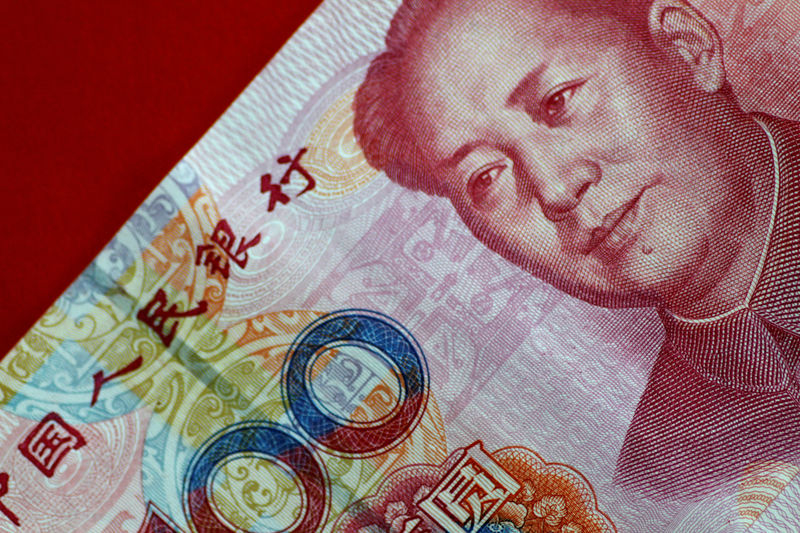 © Reuters. Illustration photo of a China yuan note
© Reuters. Illustration photo of a China yuan noteBEIJING (Reuters) – The Chinese government should slow its deleveraging drive and tolerate a bigger budget deficit next year to support the economy as downward pressure sharply increases, a state-controlled newspaper said on Friday.
As an effort to steady rising debt levels after years of credit-fuelled investment, China cut its annual budget deficit target this year – a first since 2012 – to 2.6 percent of gross domestic production (GDP) from 3 percent in 2017.
But slowing growth momentum stemming from structural changes in the economy and trade uncertainties call for a more “positive” fiscal policy in 2019 to ramp up infrastructure investment, China Securities Journal said in a front-page editorial on Friday.
“In order to maintain a certain economic growth rate, infrastructure construction needs to rebound significantly,” the paper said.
“And as infrastructure projects are mainly funded by the government, the recovery in infrastructure investment needs an increase in fiscal deficit as support,” it said, adding that allowing a bigger deficit would also offset the impact of a drop in fiscal revenues due to planned tax cuts.
To spur the economy and lighten the burdens of companies, China’s cuts in taxes and fees would exceed 1.1 trillion yuan ($160 billion) this year, beating government forecasts, Finance Minister Liu Kun told Reuters in an interview earlier this year.
The newspaper suggested that China should not be too concerned about maintaining the deficit target within 3 percent of GDP.
Central bank research head Xu Zhong had said earlier this year China should rely more on fiscal policy to support the economy, adding that the government should use fiscal funds to replenish the capital of state-owned financial institutions and ease the strain in financial market deleveraging.
The central bank has been injecting liquidity in various ways and is pressing banks to keep lending to cash-starved companies, but lenders have been cautious, fearing a fresh spike in bad loans.
The newspaper also brushed off worries about potential debt risks from a bigger budget deficit, stressing efforts to bring “hidden” local government debts back onto the books would be conducive to managing the risks.
Chinese authorities have reiterated confidence in meeting their GDP growth target of around 6.5 percent this year, but the world’s second-largest economy has shown further signs of strain.
Some economists believe growth could cool to as low as 6 percent in 2019, which would be the weakest expansion for China since 1990.
Investment growth has remained weak in recent months even after local governments were told to expedite issuance of special bonds used to fund infrastructure projects, likely still feeling the impact of this year’s debt crackdown that has reduced local governments’ financing risk appetite and hit sectors from real estate to finance.
That has also been compounded by a sharp escalation in China’s trade dispute with the United States this year, hurting investor confidence and dealing a blow to exporters affected by U.S. tariffs on hundreds of billions of Chinese goods.
($1 = 6.8727 renminbi)
Fusion Media or anyone involved with Fusion Media will not accept any liability for loss or damage as a result of reliance on the information including data, quotes, charts and buy/sell signals contained within this website. Please be fully informed regarding the risks and costs associated with trading the financial markets, it is one of the riskiest investment forms possible.
Source: Investing.com




























